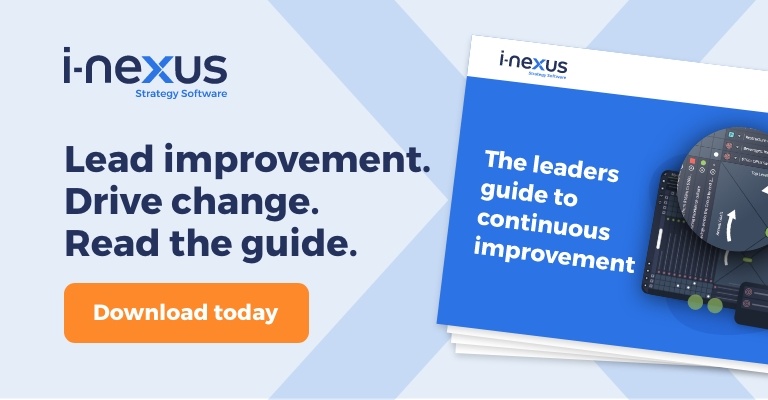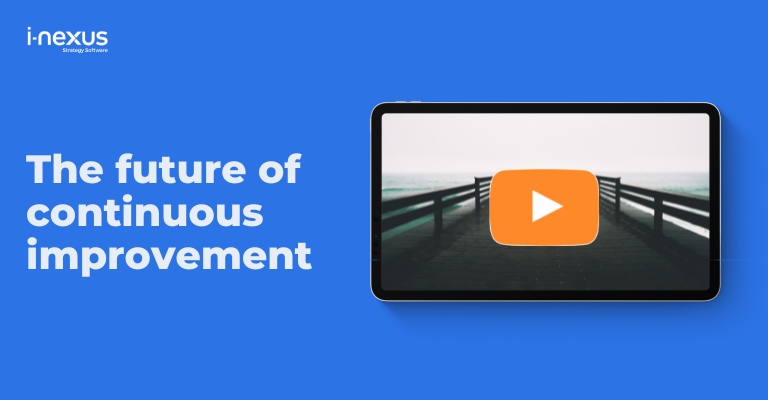When it comes to delivering improvement, looking at base operations and managing change daily can be a strong basis for success - here's what to look for and the options available to build the strong operational foundations that can support your continuous improvement journey for the long haul.
Written by: Nigel Richardson
Often when being tasked with deploying successful improvement, an initial review of the base operational standards will highlight significant gaps to there being an environment where improvement can be defined, delivered or sustained.
As a result, there is often a significant amount of effort invested to instill a core operational discipline which goes way beyond the basic coaching of improvement tools and techniques.
For some this is scope creep and a risk, for others this is an opportunity to define and lead an initial first wave of basic, but tangible and rewarding, change at the very first stage of your improvement journey.
This article is a summary of my experience of what to look for and the options available to build the strong operational foundations that can support your improvement journey for the long term.
Starting off the improvement conversation
A conversation where improvement is defined is dependent on some key inputs for the discussion to be meaningful.
The two basic operational foundations that need to exist are an understanding of:
1) How the work should be done
2) The level of expected performance and results that the work should provide in a given time period
If the above foundations exist then the focus turns to the actual work taking place and understanding:
- Whether the expected performance was achieved, and
- The work was completed in the expected way
In enabling this virtuous circle to happen, a continuous improvement deployment is rarely limited to the pure improvement tools and techniques.
Building a performance management foundation for improvement
Up front effort will be spent working with teams to establish a base level of operational discipline to provide a foundation to understand the expected performance and process to perform the tasks at hand.
Depending on who you discuss this foundation layer with, it will be referred to as daily management, daily kaizen, ‘good ops’ or even common sense.
The daily management moniker can be misleading as whilst daily is often the frame of reference here, think of this more as the structure being applied to how the day to day business works and performs across real time, shift to shift, daily, weekly or monthly time horizons.
A better way to make the work, work
In his landmark book on how continuous improvement should be applied in the service industry ,’Freedom from Command and Control’, John Seddon gave the book the subtitle ‘a better way to make the work, work’.
I love this phrase and I think it extends far beyond the service industry.
Applying that phrase to this section, it is vitally important to have a view on how the work will be performed (a level of process) and the expected results it will yield (performance).
This book challenges the level of structure and process that should be defined in the service context (more on that later) and provides an interesting challenge to the concepts of standard work.
As a general principle, even acknowledging the above argument, if there is no stability, consistency, or performance management through fact in the day to day business; it will be very hard to generate, implement or sustain any form of continuous improvement.
The operational foundations of this cycle are mainly associated with:
1) Demand vs Capacity
What is the expected load on the business for this period and how will we organize our capacity to meet the demand?
2) Process
What are the ways of working being applied, and do we have the required experience, capability and enabling tools that are needed for this period?
3) Performance
What performance as a target are we expecting to see from a delivery, quality or customer perspective for the respective time increments in which we are managing performance?
Taking action on performance management gaps
Investing time and energy in establishing the above foundations will ensure that gaps or deviations from the expected way it should be done become obvious.
Improvement conversations that are triggered by an acknowledgement of either of these problems has achieved it’s first critical step to success.
Once the conversation moves to exploring the gap in detail, we see the transition into a more 'improvement methodology' style structure.
This conversation will initially happen at the point ideally closest (in location and accountability) to where the work has taken place by the people doing the job.
As a result, the first layer of improvement tools are relatively simple to apply and are looking to generate smaller improvements that are within the gift of the team concerned to apply.
Regardless of whether the conversation is framed around PDCA, 8D, 4D, 3Cs, A3, GE Workout or any other of a multitude of templated improvements; the general structure of the exploration of these smaller scale business problems will follow the below topics:
A) Business problem definition
1) What are the gaps, deviations or ambiguities in the process based on observations on how the work works?
This would imply there is an opportunity to make things easier and simpler to follow on the ground.
Are any of the deviations actually making the performance better? Does the standard need to change and adapt?
B) Root cause problem solving
1) If you want to ensure your improvement sustainably reduces or eliminates the problem then you need to be confident that you are going after the appropriate causes.2) This can be a consensus view of the countermeasures available to resolve a small problem quickly.
As problems become a level more complex the teams will be able to leverage their training in simple root cause problem solving to pull out causes that they can tackle within their gift, but also identify causes where additional help or support may be needed from other parts of the organization.
3) Getting to the root cause is a key aspect of this discipline that needs coaching and reinforcement, people want to jump to action and talk solutions.
C) Defining and implementing improvement level
How do we make the next period better, what did we learn, what can we implement that give us confidence that the next period’s work and results will no longer see this challenge?
The above suite of reviews, assessments, decisions and action will be taking place in time increments appropriate to the business.
Two examples from my experience of the rhythm of review being rapid or even real time include:
- Feed forward control process management in continuous manufacturing environments
- Monitoring service and SLA adherence in a contact center environment.
Daily management performance will be summarized and trended for review at more summary periods to discuss any broader level issues that could be impacting performance over an extended period of time (e.g. daily, weekly monthly averages or trends).
Applying this basic framework of questions and conversations across your functions and the variety of levels of leadership and time frame is the basic premise of a well-run business.
Often it is under the remit of the continuous improvement program to deploy these basics (or if they are missing then it soon becomes the priority foundation to establish).
Supporting tools and techniques to drive improvement
There are other tools and techniques you will see applied in this context to ensure the above is successful, such as:
1) Demand profiling
What are the patterns of demand from our customers that allow us to estimate demand levels for the future, and explore smoothing that demand across the operational period in question?
How does that demand translate to an expected working rhythm?
2) Capacity planning
What is our capacity for the given period based on the availability of people and equipment?
3) Performance dashboards
Establishing some form of performance dashboard will allow everyone to understand the expected vs actual performance and ensure improvement conversations are performance driven.
4) Observation scheduling
Some form of observation or process confirmation schedule so the way the job is performed is frequently reviewed and understood to drive conversations on process, enablers and also adherence.
5) Visual management
Introducing the mechanism of huddle boards, com cells, or visual factory boards to present information and facilitate the regular Plan, Do, Check, Act conversations.
However, carefully designing that review meeting, and agenda, plus the layout of the board and how the prep and follow up is crucial.
6) Skills and training matrices
These help you to understand who in the business is trained for what work, and that they have the right training profile to do their job well, but also help others where flexibility is needed.
7) Leader standard work
This is establishing a re-occurring pattern of activity for the leader of the business area to ensure that this ‘good ops’ system is working whilst also demonstrating their personal commitment to its success.
Closing thoughts
Establishing and managing a stable operational base is a constant process and is underpinned by a level of straight forward Continuous Improvement.
Investing in this foundation is time rarely wasted when it comes to ensuring that conversations can focus on gaps between expected and actual performance.
It is also critical to ensuring that large scale improvement or disruptive transformation goals can be sustained.
However, this is only the first of several layers of tools and techniques to support your Continuous Improvement.
To move beyond the basics, we must consider what toolkit is needed to run simple improvement projects, as will be covered in the next instalment of this series.
Continue learning about continuous improvement
Click here to learn more about continuous improvement, or take a look at these content recommendations:
- Continuous improvement in 2020 and beyond: Watch how continuous improvement will evolve into the 2020s and how you can be successful.
- DMAIC v Six Sigma v Lean: Our guide to the steps and tools you'll need when driving process improvement through one of these three methodologies.
- The Leader's Guide to Continuous Improvement: Download this eBook to get a comprehensive overview of how DMAIC, Six Sigma, Lean, PDCA can support your business in finding competitive advantage.
About the author
Nigel Richardson is a continuous improvement expert. His background spans 20 years in business transformation and continuous improvement across retail, pharma, aviation and IT supply chain. He is passionate about supporting organizations to achieve their strategic, transformational and improvement goals, and outperform their peers year after year.
If you’d like to talk more about your strategic challenges, reach out to him on nigel.richardson@i-nexus.com or connect with Nigel on LinkedIn for the latest Strategy Execution insights.





